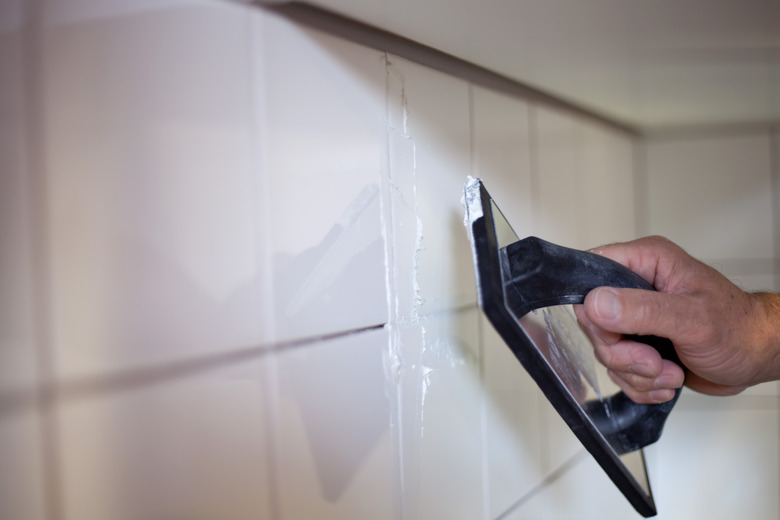How Thick Should Grout For Tile Be?
Grouting tile gives it a finished, professional look and prevents dirt and debris from getting clogged in between the tiles. Grout can be applied in its natural white color, but tinting it makes it less apt to show dirt and detract from the beauty of the tile. When applying grout to tile, mixing it to the proper grout consistency makes the job easier and ensures the grout won't crumble and loosen when the tile is washed or exposed to moisture.
Water-to-Grout Ratio
Water-to-Grout Ratio
There is no hard and fast formula for mixing grout to the proper thickness. Start with a small amount of grout mixture in a small container. Slowly add water to it and gently mix it with a putty knife. It's always better to start with too little water and add more than to make the grout consistency too thin from the start
Tilt the bucket as you mix the grout and water together to make sure all of the powder gets mixed in well. Continue adding water a little at a time. If the mixture becomes too thin, you can add more of the grout powder.
When the mixture resembles thick cake batter or peanut butter and sticks to the end of the putty knife, it's the proper consistency. You can also test the consistency by picking up a handful to see if it holds its shape. Squeeze the grout lightly to see if water comes out; it shouldn't in properly mixed grout.
Thin and Thick Grout Consistency Issues
Thin and Thick Grout Consistency Issues
Your grout can have issues if it's either to thin or too thick. If the grout mixture is too thin, it won't properly harden. Thin grout can also shrink more than it's supposed to, which can lead to cracking. When it's exposed to water, it will disintegrate and fall out of the crevices between the tiles.
Grout that is too thick won't fully seal the tile because it'll be too thick to reach the bottom of the cracks. Overly thick grout can also stick to the surface of the tiles and is difficult to remove when the job is done.
Good vs. Bad Grout
Good vs. Bad Grout
Grout powder, which is mainly comprised of Portland cement, should have the consistency of all-purpose flour and be free of clumps or lumps. The mixture is highly sensitive to moisture exposure, which is why it's typically enclosed in an airtight plastic bag inside the container or bag in which it's packaged. If the grout has any clumps in it, it has likely been exposed to moisture and won't set up properly. Discard any grout mix that isn't free-flowing and powdery.
Tips and Hints
Tips and Hints
Since mixed grout quickly dries out, only mix enough in each batch for a grout working time of about 30 minutes. Have a damp sponge handy to lightly wipe each seam in the tile as you grout it, but avoid too much water in the sponge, as it will adversely affect the grout and make it crumble.
If you live in an arid climate with low humidity, lightly cover the grouted tile with damp paper towels and change them as they dry out. If possible, run a humidifier in the room to keep the air moist. The slower grout dries, the sturdier it is. Grout that dries in a moist environment for at least 48 hours will usually last indefinitely.
